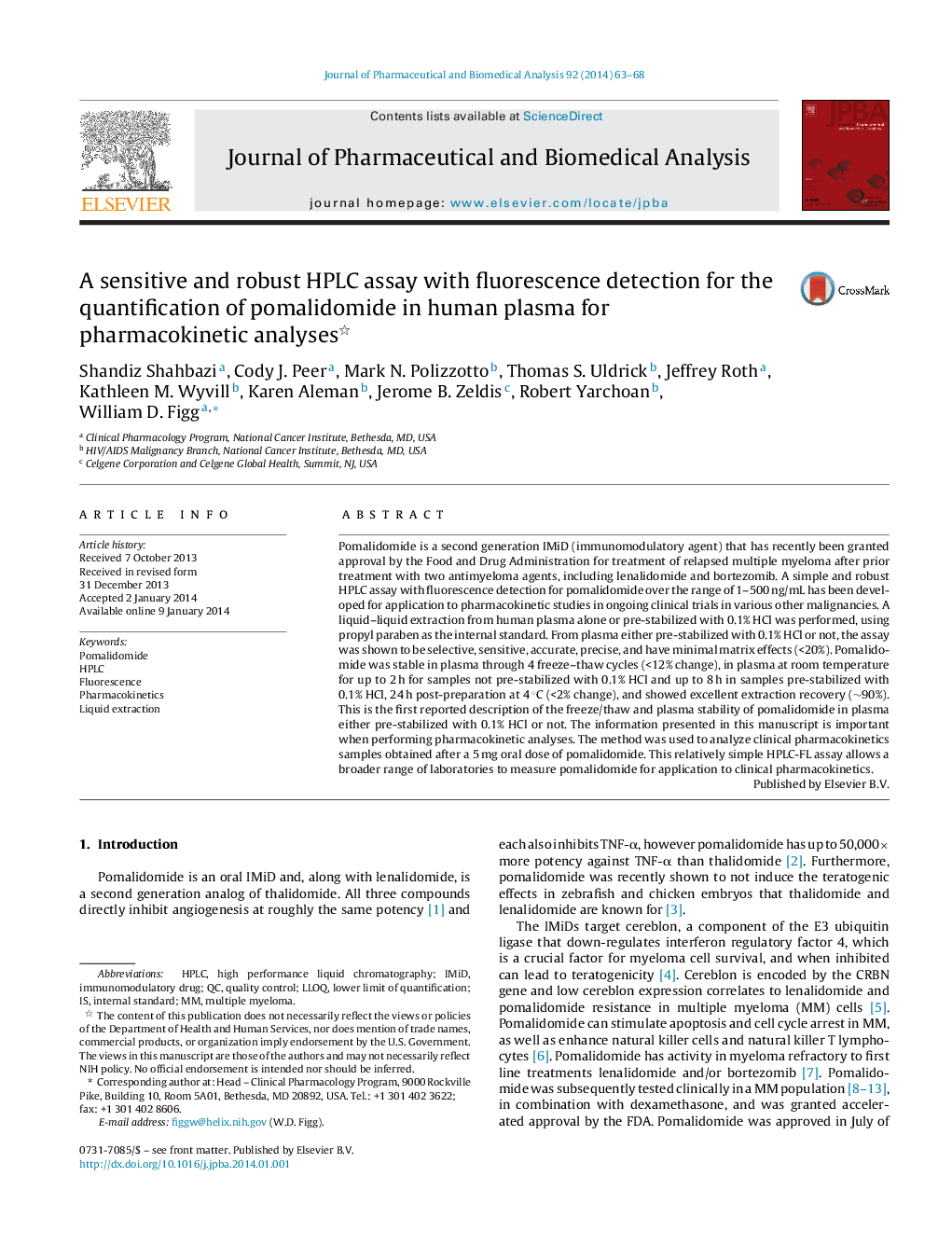| Article ID | Journal | Published Year | Pages | File Type |
|---|---|---|---|---|
| 1221761 | Journal of Pharmaceutical and Biomedical Analysis | 2014 | 6 Pages |
•HPLC assay with fluorescence detection for the quantification of pomalidomide.•Simple liquid extraction procedure that recovers over 90% of drug from human plasma.•Pomalidomide stability tested in both plasma and pre-stabilized plasma.•This method was applied to a clinical trial to demonstrate applicability of assay.
Pomalidomide is a second generation IMiD (immunomodulatory agent) that has recently been granted approval by the Food and Drug Administration for treatment of relapsed multiple myeloma after prior treatment with two antimyeloma agents, including lenalidomide and bortezomib. A simple and robust HPLC assay with fluorescence detection for pomalidomide over the range of 1–500 ng/mL has been developed for application to pharmacokinetic studies in ongoing clinical trials in various other malignancies. A liquid–liquid extraction from human plasma alone or pre-stabilized with 0.1% HCl was performed, using propyl paraben as the internal standard. From plasma either pre-stabilized with 0.1% HCl or not, the assay was shown to be selective, sensitive, accurate, precise, and have minimal matrix effects (<20%). Pomalidomide was stable in plasma through 4 freeze–thaw cycles (<12% change), in plasma at room temperature for up to 2 h for samples not pre-stabilized with 0.1% HCl and up to 8 h in samples pre-stabilized with 0.1% HCl, 24 h post-preparation at 4 °C (<2% change), and showed excellent extraction recovery (∼90%). This is the first reported description of the freeze/thaw and plasma stability of pomalidomide in plasma either pre-stabilized with 0.1% HCl or not. The information presented in this manuscript is important when performing pharmacokinetic analyses. The method was used to analyze clinical pharmacokinetics samples obtained after a 5 mg oral dose of pomalidomide. This relatively simple HPLC-FL assay allows a broader range of laboratories to measure pomalidomide for application to clinical pharmacokinetics.
Graphical abstractFigure optionsDownload full-size imageDownload as PowerPoint slide
